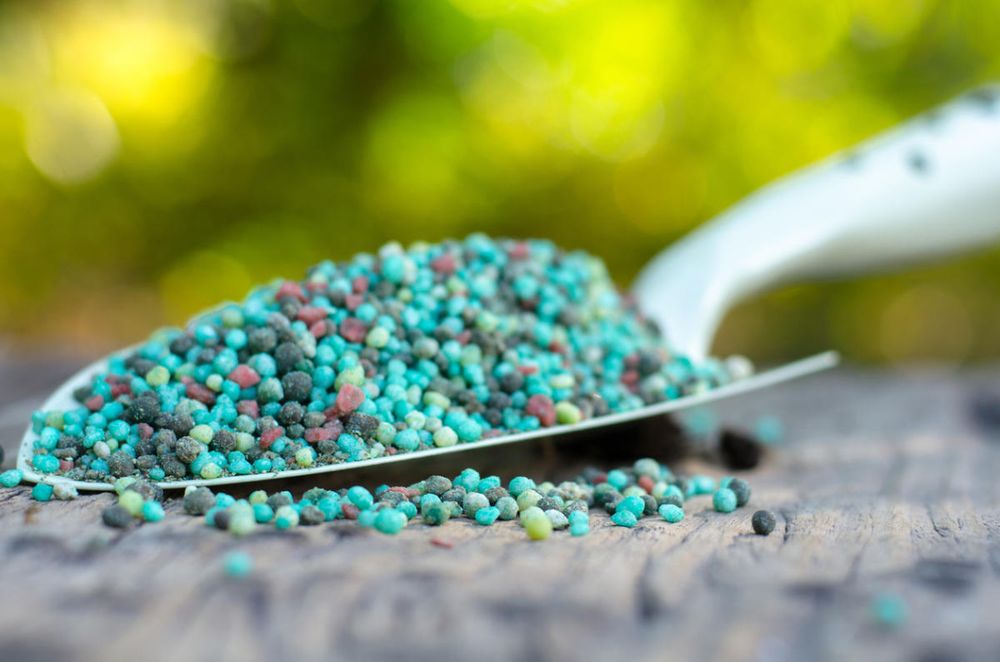Fertilizer costs triple from year ago

Wheat farmers are paying up to three times as much as they did in 2020 for the fertilizer they rely on to improve their plants’ growth and yield.
Last December producers were prepaying $220 to $275 per ton for nitrogen applications that today cost $635 to $700 per ton, said Mike Schulte, executive director of the Oklahoma Wheat Commission.
“I’m hoping we’ll see an increase in commodity prices. Producers will need that for these next crops,” Schulte said.
Cash wheat prices at the close of business Thursday were ranging from $7.81 to $8.32 per bushel at grain elevators across Oklahoma. This time last year prices ranged from $5.03 to $5.27, he said.
Currently, the widely used liquid urea ammonium nitrate, or UAN, costs $1 per pound, said Trent Milacek, OSU Extension northwest area agricultural economics specialist. It takes 2 pounds of nitrogen for every projected bushel of wheat.
“The nitrogen cost alone for a bushel is $2,” Milacek said. “Best-case scenario it stays the same. No one in the industry sees it getting better soon.”
Operators looking ahead for spring application may have difficulty contracting for UAN for delivery in December through February, he said.
Access to fertilizer is affected by the same supply chain constraints facing every industry, as well as the low inventories worldwide of natural gas – a key ingredient in the process used to make nitrogen-based fertilizers.
Workforce shortages have disrupted both the unloading of fertilizer products on ships from China and production at domestic plants, Schulte said.
Chemical & Engineering News reports major U.S. fertilizer manufacturers, on earnings calls in early November, said factors contributing to the recent spike in prices include the cost of natural gas, fertilizer plant shutdowns and China cutting exports to protect its own supply.
The World Bank blog on Nov. 15 reported China announced it has suspended fertilizer exports until June amid food security concerns. China’s exports of DAP (diammonium phosphate) and urea account for approximately one-third and 1/10 of global trade, respectively. Adding to supply concerns, Russia recently announced restrictions on nitrogen and phosphate fertilizer exports for six months, effective Dec. 1, the blog post stated.
“Accessibility could still be an issue this spring,” Schulte said. “Nitrogen management decisions are weighing on producers’ minds.”
Cutting back on nitrogen is not a good long-term strategy, he said. “Most likely yields will drag and there will be less of a crop.”
Milacek makes that argument when producers say they can’t afford to fertilize. “That’s a very silly statement in the long term,” he said.
“This is a great opportunity for good managers to face the problems head-on and be proactive in trying to manage that risk,” he said.
Schulte said wheat exports also have been affected. China is purchasing 35% to 40% less U.S. wheat, and the largest buyers of Oklahoma wheat – Mexico and countries in South America – also are buying less due to pandemic-related supply chain and workforce issues, he said.
Read also
Wheat in Southern Brazil Impacted by Dry Weather and Frosts
Oilseed Industry. Leaders and Strategies in the Times of a Great Change
Black Sea & Danube Region: Oilseed and Vegoil Markets Within Ongoing Transfor...
Serbia. The drought will cause extremely high losses for farmers this year
2023/24 Safrinha Corn in Brazil 91% Harvested
Write to us
Our manager will contact you soon



